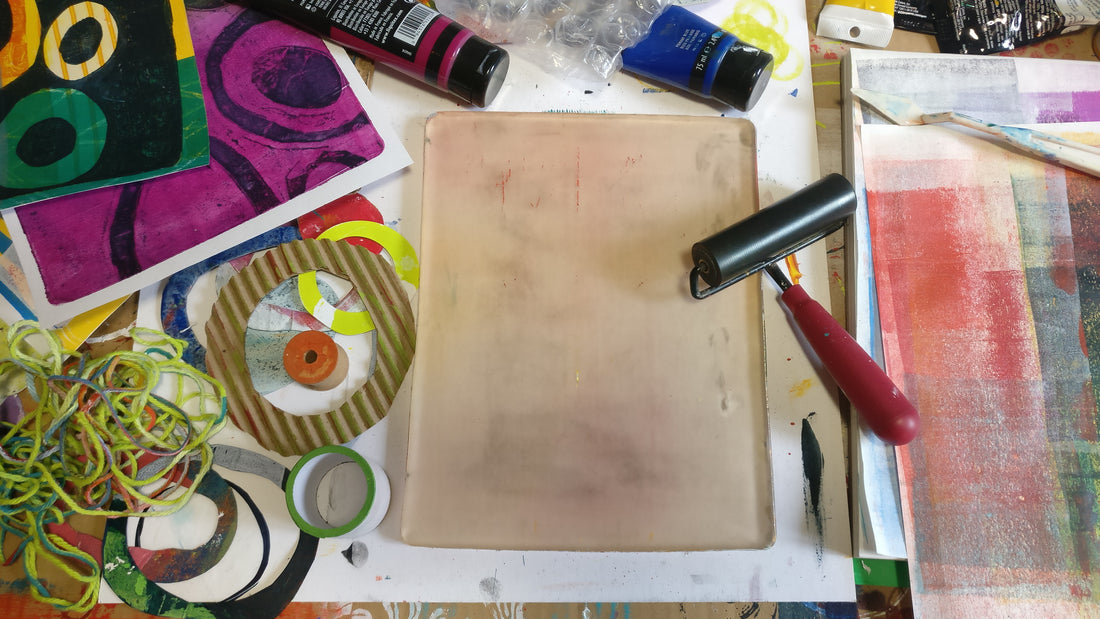
How long does a gel plate last?
One question I often get in my beginning workshops is, "How long does a gel/gelli plate last?"
My reply is usually, "Forever". Then I point to the plate in front of me, which is a little yellowed (that's just what happens over time), and explain that this is the first GelliArts gel plate I purchased nearly 13 years ago.
Okay, I don't really know if my gel plates will last till the end of time, but with proper care, you probably won't need to buy another one. (Unless of course you're like me and need to have them in ALL the sizes.)
So how do you care for a gel plate?
Cleaning while working
As I am working on a printing project I usually have gel plates lying on a piece of acrylic/plexiglass in my workspace. I may not keep them on the plexi the whole time, sometimes they end up on a piece of white paper. A clean, flat surface is important.

As I'm printing I don't worry too much about keeping them pristine. I like a little grungy buildup, but if I do want to clean the paint remaining on the plate after a print, a little water on a rag is usually all I need. If I have a stubborn spot I may reach for the hand sanitizer. (Note: Some artists use baby wipes, but I just use old rags and t-shirts, because it is less waste and I find baby wipes leave lint on the plate.)
Alternatively, I often use the "lazy" printer method, which works wonderfully. Apply a THIN layer of paint across the entire plate, quickly lay a piece of paper on top, press firmly and evenly, then walk away. When the paint has dried, slowly pull the paper off the plate. This should pull all the paint bits off the plate and provide an interesting sheet of texture to use for collage.
Cleaning/conditioning for storage
When I'm finished with a particular project, I'll clean my plate(s) thoroughly with soap and water. To keep my gel plates looking nearly brand new I'll usually do a little conditioning with baby oil too.

I'm often amazed at how much pigment I pull off a gelli plate with baby oil because my plates look pretty clean after washing. This step is especially important if I use Posca markers or soft pastels on the plate since I find those materials difficult to remove with just soap and water.

Finally, I put the gelli plate back in the original clamshell container, and hang it on the wall until next time.

Final Reminders:
- Avoid leaving your plate on bumpy/textured surfaces, since the plate will take on that texture. If you do accidentally create bumps/divots in your plate, leave it between two pieces of plain paper on a flat surface to try to remove them.
- Also avoid especially sharp objects for texture or mark making that could permanently damage your plate. If it seems too sharp to touch with your finger, probably shouldn't be used on a gel plate.
- Don't forget/neglect the sides of your plate. They often have lots of dried paint built up.
- But, it really won't hurt your plate to leave the dried paint on the plate till your next printing session. Some gel printers rarely clean their plate.
- Your gel plate may yellow over time. I don't know why, but it has happened to a couple of my oldest plates. However, it hasn't affected printing at all. Those older plates work as well as my newer plates.
Happy Printing!